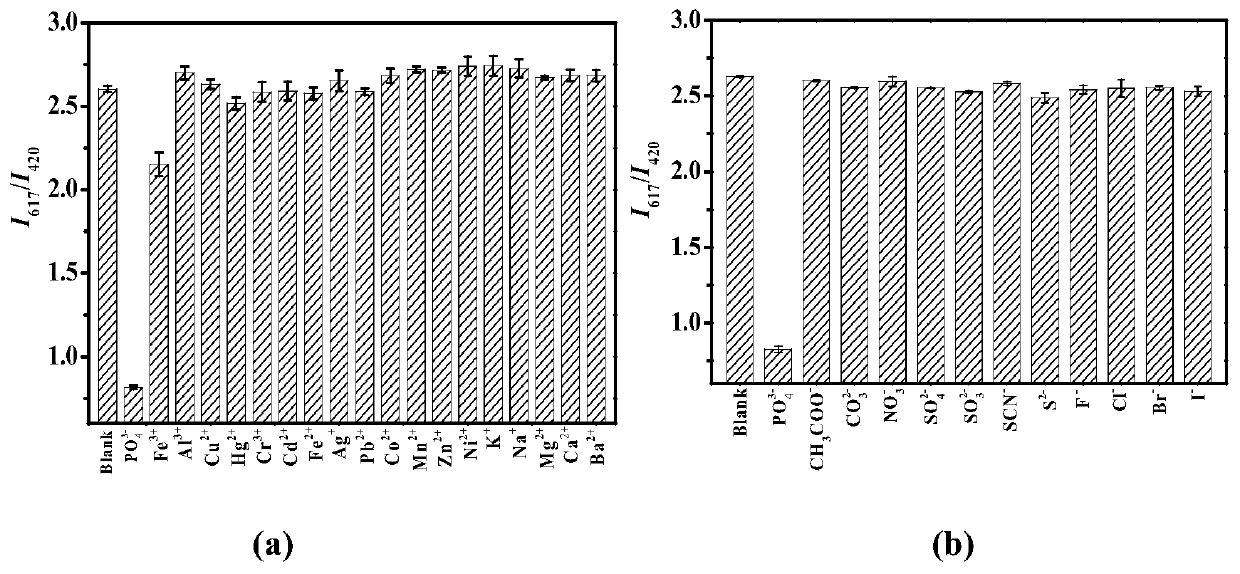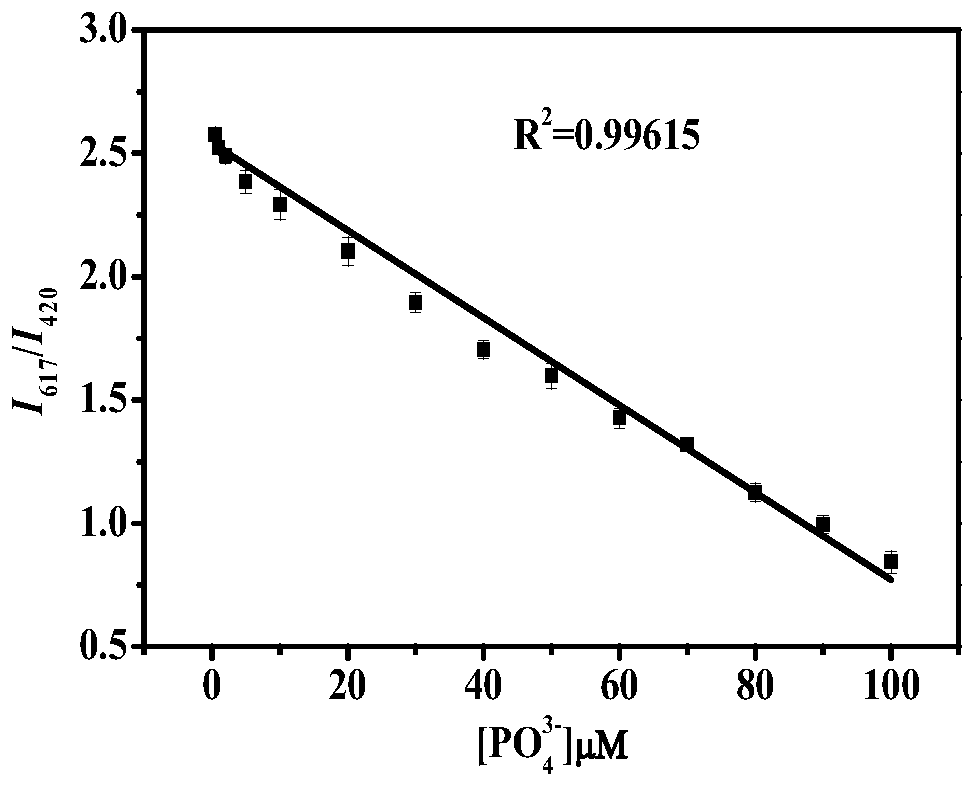Method for detecting total phosphorus in water sample based on composite ratio fluorescent probe
A ratiometric fluorescent probe and detection method technology, applied in the field of detection of total phosphorus in water samples, can solve problems such as insufficient sensitivity, spectrophotometric interference, and insufficient sensitivity
- Summary
- Abstract
- Description
- Claims
- Application Information
AI Technical Summary
Problems solved by technology
Method used
Image
Examples
Embodiment 1
[0028] A simple, sensitive and selective analysis method for total phosphorus in water samples was established based on the complex ratio fluorescent probe of rare earth ion polymer and carbon quantum dots, including the following steps:
[0029] (1) Synthesis of EuCPs: pyromellitic acid (H 4 btec, 0.5mmol, 127.1mg) was dissolved in 80mL ultrapure water, then imidazole-2-carboxaldehyde (ICA, 1.0mmol, 96.1mg) was added, and after ultrasonication for 15min, the pH was adjusted to 2.0mol / L sodium hydroxide solution to 8.0, bright yellow H was obtained after stirring at room temperature for 6 h 4 btec-ICA solution, and finally the prepared EuCl 3 ·6H 2 O solution (10mL, 50mmol / L) was slowly added dropwise to H 4 In the btec-ICA solution, the EuCPs product was obtained after stirring at room temperature for 2 h. The reaction product was washed with high-purity water and centrifuged (12000 rpm, 10 min), and then vacuum-dried at 50° C. for 24 h to obtain EuCPs light yellow powder...
PUM
 Login to View More
Login to View More Abstract
Description
Claims
Application Information
 Login to View More
Login to View More - R&D
- Intellectual Property
- Life Sciences
- Materials
- Tech Scout
- Unparalleled Data Quality
- Higher Quality Content
- 60% Fewer Hallucinations
Browse by: Latest US Patents, China's latest patents, Technical Efficacy Thesaurus, Application Domain, Technology Topic, Popular Technical Reports.
© 2025 PatSnap. All rights reserved.Legal|Privacy policy|Modern Slavery Act Transparency Statement|Sitemap|About US| Contact US: help@patsnap.com



